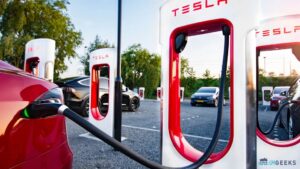The alternator and the starter are two crucial components for a modern vehicle’s operation in an intricate system. Both play distinct yet complementary roles in ensuring the smooth functioning of the vehicle’s electrical and mechanical systems. Understanding their roles and how they work can provide valuable insights into vehicle maintenance and troubleshooting.
The significance of the alternator cannot be overstated in the realm of vehicle operation. This component’s fundamental function of generating electrical power keeps the car’s battery charged and all the electronic components running smoothly. While the engine is the heart of the vehicle, the alternators are undoubtedly the lifeblood of the electrical system.
The Alternator: Power Generation
The alternator, often called the car’s generator, is at the heart of a vehicle’s electrical system. When the engine runs, its main job is to produce electricity, which is used to power various components and recharge the battery. Contrary to popular belief, the alternator does not charge the battery directly; instead, it maintains the battery’s charge level.
Related: 5 inventors to improve the long-term of electric vehicle batteries
The alternator operates using the principle of electromagnetic induction. It consists of a rotor, which spins inside a stator wound with copper wire coils. As the engine rotates, it turns the alternator’s rotor, creating a magnetic field. This field induces an alternating current (AC) in the stator windings.
The alternator then converts this AC into direct current (DC) using diodes, which the vehicle’s electrical system utilizes. Without a properly functioning alternator, the vehicle’s electrical components, such as the lights, air conditioning, and infotainment system, would quickly drain the battery’s charge, leading to system failures and, eventually, a stalled engine.
The Starter: Igniting the Engine

While the alternator powers the vehicle’s electrical system when the engine is running, the starters play a pivotal role in starting the engine. A starter is a powerful electric motor designed to crank the engine, initiating the combustion process necessary for the engine to come to life.
The starting solenoid, a relay switch installed on the motor, receives an electrical signal from the driver when they turn on the ignition or push the start button. The solenoid, in turn, engages the starter motor’s gear with the engine’s flywheel or flexplate. As the starter motor turns, it spins the engine’s crankshaft, which initiates the engine’s combustion cycle.
Once the engine runs, the starter disengages from the flywheel or flexplate and ceases operation. Unlike the alternator, which operates continuously while the engine runs, the starter only functions during the engine start-up process.
Related: Plug-in Hybrid Electric Vehicles: 7 Things You Need to Know
Maintenance and Troubleshooting
The alternator and the starter are critical components of the vehicle’s electrical and mechanical systems. Routine maintenance and periodic inspections are essential to ensure proper functioning and longevity.
Dimming headlights, a dead battery, or dashboard warning lights signaling problems with the charging system indicate that the alternator is deteriorating. Conversely, symptoms of a faulty starter may manifest as slow or hesitant engine cranking, grinding noises during start-up, or complete engine failure to start.







